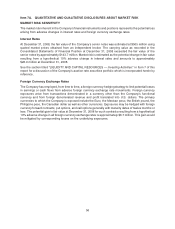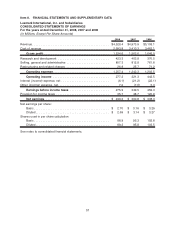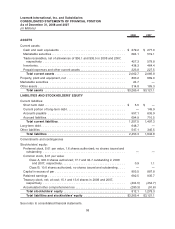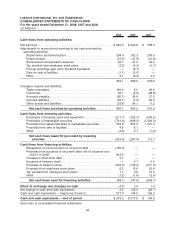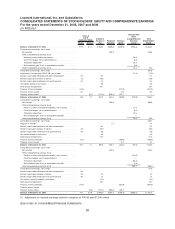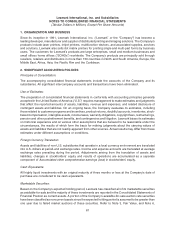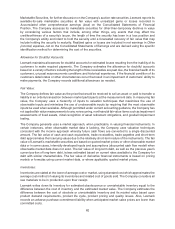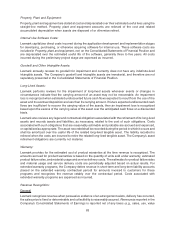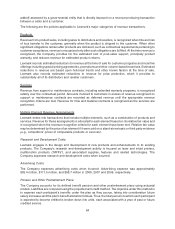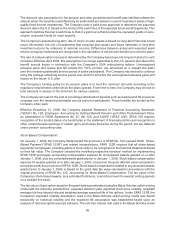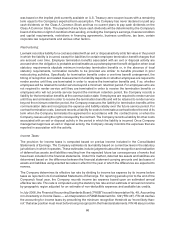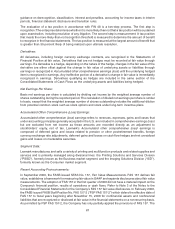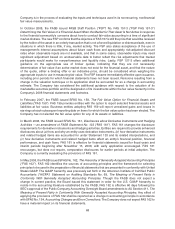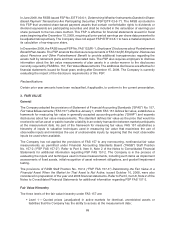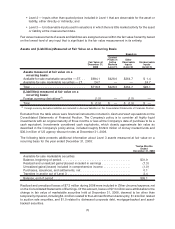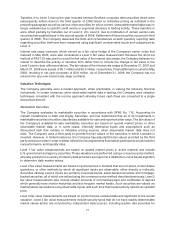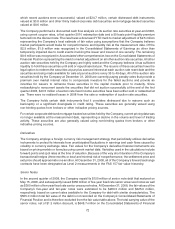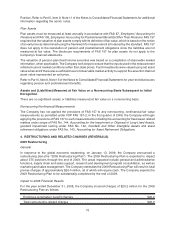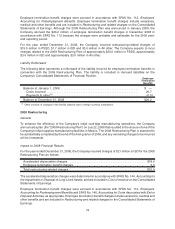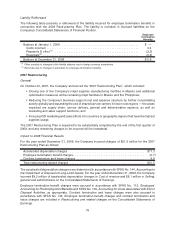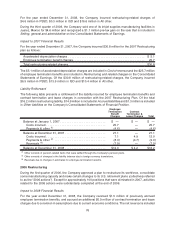Lexmark 2008 Annual Report Download - page 72
Download and view the complete annual report
Please find page 72 of the 2008 Lexmark annual report below. You can navigate through the pages in the report by either clicking on the pages listed below, or by using the keyword search tool below to find specific information within the annual report.was based on the implied yield currently available on U.S. Treasury zero-coupon issues with a remaining
term equal to the Company’s expected term assumption. The Company has never declared or paid any
cash dividends on the Class A Common Stock and has no current plans to pay cash dividends on the
Class A Common Stock. The payment of any future cash dividends will be determined by the Company’s
board of directors in light of conditions then existing, including the Company’s earnings, financial condition
and capital requirements, restrictions in financing agreements, business conditions, tax laws, certain
corporate law requirements and various other factors.
Restructuring:
Lexmark records a liability for a cost associated with an exit or disposal activity at its fair value in the period
in which the liability is incurred, except for liabilities for certain employee termination benefit charges that
are accrued over time. Employee termination benefits associated with an exit or disposal activity are
accrued when the obligation is probable and estimable as a postemployment benefit obligation when local
statutory requirements stipulate minimum involuntary termination benefits or, in the absence of local
statutory requirements, termination benefits to be provided are similar to benefits provided in prior
restructuring activities. Specifically for termination benefits under a one-time benefit arrangement, the
timing of recognition and related measurement of a liability depends on whether employees are required to
render service until they are terminated in order to receive the termination benefits and, if so, whether
employees will be retained to render service beyond a minimum retention period. For employees who are
not required to render service until they are terminated in order to receive the termination benefits or
employees who will not provide service beyond the minimum retention period, the Company records a
liability for the termination benefits at the communication date. If employees are required to render service
until they are terminated in order to receive the termination benefits and will be retained to render service
beyond the minimum retention period, the Company measures the liability for termination benefits at the
communication date and recognizes the expense and liability ratably over the future service period. For
contract termination costs, Lexmark records a liability for costs to terminate a contract before the end of its
term when the Company terminates the agreement in accordance with the contract terms or when the
Company ceases using the rights conveyed by the contract. The Company records a liability for other costs
associated with an exit or disposal activity in the period in which the liability is incurred. Once Company
management approves an exit or disposal activity, the Company closely monitors the expenses that are
reported in association with the activity.
Income Taxes:
The provision for income taxes is computed based on pre-tax income included in the Consolidated
Statements of Earnings. The Company estimates its tax liability based on current tax laws in the statutory
jurisdictions in which it operates. These estimates include judgments about the recognition and realization
of deferred tax assets and liabilities resulting from the expected future tax consequences of events that
have been included in the financial statements. Under this method, deferred tax assets and liabilities are
determined based on the difference between the financial statement carrying amounts and tax bases of
assets and liabilities using enacted tax rates in effect for the year in which the differences are expected to
reverse.
The Company determines its effective tax rate by dividing its income tax expense by its income before
taxes as reported in its Consolidated Statements of Earnings. For reporting periods prior to the end of the
Company’s fiscal year, the Company records income tax expense based upon an estimated annual
effective tax rate. This rate is computed using the statutory tax rate and an estimate of annual net income
by geographic region adjusted for an estimate of non-deductible expenses and available tax credits.
In July 2006, the Financial Accounting Standards Board (“FASB”) issued Interpretation No. 48, Accounting
for Uncertainty in Income Taxes — an interpretation of FASB Statement No. 109 (“FIN 48”). FIN 48 clarifies
the accounting for income taxes by prescribing the minimum recognition threshold as “more-likely-than-
not” that a tax position must meet before being recognized in the financial statements. FIN 48 also provides
66


